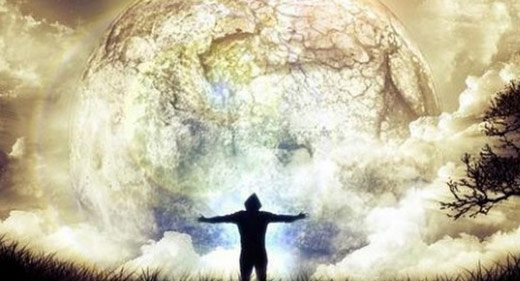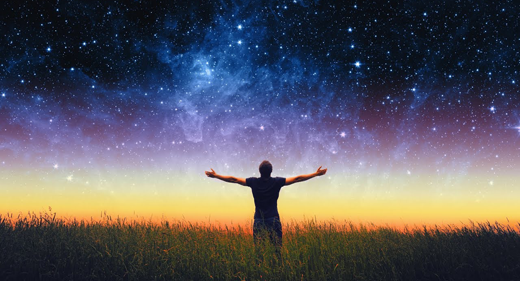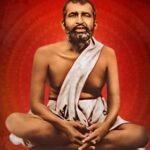by Bonnie Greenwell Ph D: If you feel you are in a spiritual awakening process, or possibly in a spiritual emergence or crisis,

you may feel you have enough to worry about with the physical challenges that arise, or psychic shifts that are throwing you into unfamiliar territory. But what is really important to understand in this awakening process is that it is your subtle energy field that is erupting and unraveling and producing all the changes.
One way to frame this experience and gain some insight is to use the model common to yogis, that maps chakras (energy vortices) and nadis (flows of energy) and various other knots and points and brain centers that get involved in the transformative and evolutionary changes you are experiencing. In this essay I will focus on the role of chakras in transformation and spiritual awakening.
Various esoteric systems see chakras in different colors, with varied symbols, and ascribe various characteristics and talents to each. I believe the yogic science of Kundalini Tantra is the most useful model to understand the many phenomena that arise in a spiritual awakening process. So here, in a very truncated and simplified way, are the points I find most helpful in seeing what kundalini activity is up to in any given body.
The most significant chakras are said to be in the center of the spine but there are probably 50 chakras throughout the body and these are points where your consciousness and energy intersect, like little wheels of energy holding your invisible energy field together.
THE FOUNDATIONAL CHAKRA
At the base of the spine is the foundational chakra, muladhara, which holds you into a sense of having a body, of being a separate person, a connection and agreeement that spirit is making with existence. Three qualities are rooted here — the tendency to lethargy (tamas), activity (rajas)or harmonious balance (sattva). We each have a mix of these. Sometimes you can see them clearly in the temperament of a new-born infant. Here also our spirit becomes identified with the limitation of time and space, and we know we are part of the earth. Our life force is rooted here and active, because we feel we are alive and pranic energy is moving throughout our body. Kundalini is said to be the residual energy that is stored here, holding us in stasis, unless or until it is jolted into awakening and winding upward through our bodies.
Although kundalini arises from this point this does not mean the chakra has awakened and transformed at the time of awakening. I don’t believe this happens until the rest of the transformation is done and the system is ready to embody the spiritual sense of spacious presence that a full awakening offers. Then there may be a profound letting go into living a life of internal freedom. It feels like the ground breaks underneath you and you are standing in space.
THE SEXUAL AND PROCREATIVE CENTER
The second chakra, swadhisthana, is related to the sexual organs — the drive to procreate, or the desire for pleasure originates here. This chakra is active but in many people it is out of balance, causing obsessions with sex or the opposite dynamic — fear, frigidity, condemnation of the body or of life. This area is believed to be the seat of all desires, and the storehouse of the collective unconscious, holding all the darker energies in the deep subconscious. Because of this a person might become obsessed with terror or demonic images, and move through a sexual or fear crisis as kundalini moves into and amplifies this chakra. For this reason many spiritual traditions emphasize opening or awakening chakras in the upper body first, but eventually the issues related to this area will need to be addressed. When this deep unconscious material is cleared out a person is said to be free from lust, anger and greed, to feel integrated, calm and fearless, and able to have a strong will and dedication to their spiritual life.
THE SEAT OF POWER
The 3rd chakra, Manipura, located at or slightly below the naval, is where our sense of a personal identity lives. It is the power center, concerned with survival and accumulation. The quality of energy here has a great impact on our digestion, the fire and energy that moves through all our organs, and our general psychological and physical health. When out of balance a person may be arrogant and demanding, feel driven and be overbearing. At the opposite extreme they may feel weak, ineffectual, depressed, energy deficient and helpless.
We have both upper and downward flowing pranic energy flows in our bodies that circulate in the 3rd chakra center andkundalini yogis believe that for good health and spiritual growth these energies need to be rerouted to move in tandem upward through the body, so some yogic practices are designed to accomplish this. Most westerners have not had a life practice of gradually preparing to manage these energies so are subjected to random problems when the 3rd chakra awaken.
Some people in a spiritual awakening or spiritual crisis report chronic fatigue, listlessness, and even being bedridden for a long period. This indicates that energy has either burned out or become depleted in this area. In my observation some of the things that might trigger this depletion are working with intense energy, breathing or meditation practices that concentrate all energy in the upper chakras; paying little attention to the basic physical needs of the body either because ofa belief it is unimportant or because of being too busy; or psychological issues that led to one of the two extremes identified above — living with great forcefulness in the world, or feeling great inadequacy in the world.
It takes time and self-valuing to repair any damage in Manapura and yogis say a sincere spiritual commitment can also help to stabilize here. When this chakra functions well the body will be healthy and probably long-lived. When this chakra is fully awakened by kundalini the sense of a separate identity is seen as illusory, and there is a profound change in how the will, spiritual intuition, and intention is experienced. This is a major turning point in a spiritual awakening, and after manapura is awakened the kundalini is said to no longer fall into the lower chakras. Sometimes benevelent psychic powers may arise when the chakra is awakened. One also begins to see beauty in the world and envision new possibilities in their life. Biases, and prejudices fall away. It is an important time to learn to listen to the deeper intuition and become aligned with your authentic sense of expression in the world. Old dysfunctional relationships tend to fall away. Occasionally much of a person’s previous life falls away.
AWAKENING THE HEART
The 4th chakra, Anahata, is in the center of the chest in the spine, parallel to the heart. If we could move through life with no disappointments and no loss or grief, then our heart chakra might stay open and loving in the world, but every pain or contraction creates armoring, protectiveness and defensiveness. The heart chakra is associated with our creativity, our love of life, appreciation of nature and other people, compassion and empathy. To the extent these are available our heart chakra is balanced and open. When kundalini does its transformation here we may find that life flows smoothly, what we need appears, and we are emotionally balanced. For many people an initial spiritual awakening is at the level of the heart, triggered by a profound love of another person or relationship with a guru. Sometimes being in the presence of a realized person will spontaneously open and activate the heart chakra, orparadoxically, an experience of deep griefwill open us.
During the opening of this chakra you may hear voices or sounds from other realms, hear buzzing or humming sounds and the music of a flute, and feel great sensitivity to the feelings of others. You may temporarily have clairvoyant or psychokinetic experiences, or even a capacity to heal. You may become detached from worldly things, and find old pleasures meaningless. As the energy is working waves of old grief might arise to be released. You can feel unusual sensations in the heart, or have a sudden rising of unconditional love or compassion. It can be like an emotional roller coaster for a while, but as the work here settles out there is a deep peace and internal happiness. It is important to think positively, some yogis report, because you are likely to manifest what you think as this chakra transforms itself. Some people begin to feel that all that exists in the world is love.
AWAKENING TO THE OPPOSITES
The 5th chakra, Vishuddhi, is in the cervical plexus behind the throat, and impacts throat, ears and hearing. Shuddhi means to purify, but the work here goes beyond clearing because when the chakra transforms it brings one to terms with the opposites and allows consciousness to understand and accept both the light and dark aspects of life. This brings the mind harmony, inner peace, compassion and a wise perspective. One begins to realize that all the challenging experiences of life are here to teach us. If there are psychic intrusions the person can handle them with discrimination and not become distracted or overwhelmed. Greater creativity, and insight into spiritual teachings, bliss and a long life are other reported benefits of awakening this chakra, as well as the occasional ability to read another person’s thoughts.
When vishuddhi is out of balance or blocked the thyroid can be damaged, and ears throat and hearing may be challenged. It can be difficult to express thoughts and feelings. Sometimes there are random movements or periodic shaking of the neck and head. If for some reason the person has become attracted to psychic powers yogis say their energy can become stuck, and it also is blocked when one has learned to suppress their feelings and self-expression.
This chakra is emphasized in yogas that use sound i,e, shabd and nada yoga, and can be opened through mantras, music, and chanting, especially if the person is very devotional. It is believed that people with remarkable speaking skills, or beautiful singing voices were born with vishuddhi open and active.
AJNA: THE 3RD EYE
Ajna means to know or follow and this chakra, located between and slightly above the eyebrows, is considered the command center of the entire subtle body system. It has been associated with the pineal gland, which evidently begins to shut down when children are 9 or 10.
There are many esoteric and meditation practices that emphasize putting attention on this 3rd eye, with the belief that this will purify the mind and prepare one to awaken their entire energy system with fewer problems. A series of spiritual events have been attributed to this chakra, especially flashes of great light, falling into light or bliss, visions, profound stillness, and psychic revelations. It is at this transformational opening one glimpses the unreality of the personal identity, and may feel detached from the senses. As energy moves upward from here, thesubtle body may rise or sink into states of samadhi, and you may feel merged with the universe, or lose all consciousness of separation from the cosmos.
However, the opening of Ajna does not mean the end of the energy process. It generally sends energy back down through the lower chakras to further clear deep-seated conditions and toxins and to strengthen the system. If you have done no preparatory work, and have chakras that have not yet opened fully, the entire kundalini process may activate and bring out personal and collective unconscious material. This is one of the reasons that spiritual traditions have emphasized the need for a guru or guide to help you through this process.
A THOUSAND PETALS IN SAHASRARA
Sahasrara chakra is likened to a thousand-petal lotus, and is located either at the top of the head or above it, depending on what tradition you follow. Tantra sees this as symbolizing unlimited possibilitiesand the full realization of Truth — a vast knowledge of nothing and everything, or merging with the wholeness of all. The samadhi experience here is an ego death, a movement forever out of the mundane and limited human awareness. Perspectives of life and one’s role in it are profoundly altered. Some esoteric systems say there are numerous spiritual chakras beyond the crown which allow one to enter other dimensional experiences and relationship, but these are beyond the scope of my interest and expertise.
As energy and conscious move into the brain there is still another level of clearing that is triggered, along with the opening of latent brain centers. So some people report itching, crawling, burning, vibrating and other sensations in the head as energy penetrates the upper body. A few say it is like having someone drilling in their head. This can be a mild experience or a very intense one, and to move through it requires great detachmentand trust in the radiant and blissful potential of this process.
Some spiritual traditionsdo not see completion in the blessing of a samadhi state, but encourage instead an embodiment — bringing Truth back into the body — and learning to live from the perspective absorbed in those moments. There are practices that bring energies back through the physical and subtle bodies, promoting a final clearing of deep unconscious material, and grounding a person into the willingness to live with the whole of life — to be ordinary and be of service.
There are other factors in the subtle energy system — knots that hold attachments, small chakras that have essential roles to play, shifts in how the senses work, psychic openings, etc. The major nadis, sushumna in the center of the spine, ida, the cooling mental energy and pingala , the heating prana energy, produce their own phenomena as they awaken and criss-cross from the tailbone and into the face. So this is a partial and limited description of the complexities of our energy fields, which are clearly molecular structures holding the substance of our lives.
As a non-dual teacher it is tempting to say — just shift consciousness and wake up to the pure unbound presence that you are and you will be free. I know there is a place within each of us that is already free, still and completely at peace. The direct approach to awakening emphasizes the possibility of slipping into this Truth NOW, as it is always here NOW.
But the fact is that most spiritual seekers, and many who accidentally stumble onto this path of transformation and realization without having sought it, fall into this evolutionary and chaotic awakening process eventually, and their entire body/mind/spirit is engaged. We live in a culture that does not see this as transformation, and typically believes any behavior and experiences outside of a limited norm are evidence of illness. So we must go clear back to very ancient teachings to find a model that validates the many phenomena of evolutionary change that we experience.
There is a great blessing and a profoundly peaceful and joyful outcome available in this process. Perhaps in a few persons, realization of Truth and relaxation into living in the moment is gentle and sudden and complete. But from what I have seen over many years it is more common to move sporadically through the wild and unpredictable phenomena of our energy centers awakening, balancing and transforming themselves. It is unique to each of us, just as puberty has its unique challenges. It is the answer to our longing to be free.
(Much of the detail in this essay is drawn from the teachings of the late Swami Satyananda Saraswati, author of Kundalini Tantra, and founder of the Bihar School of Yoga in India. For a deeper understanding of this tradition, and the practices they use I recommend his books.)








































